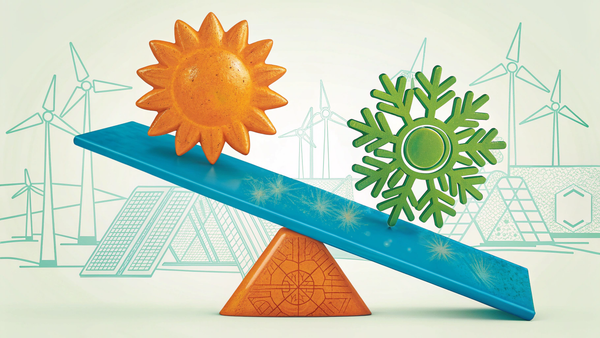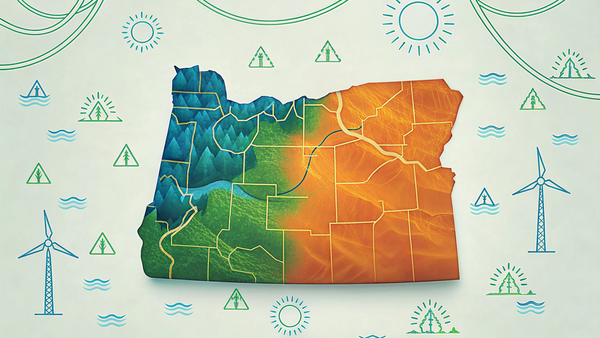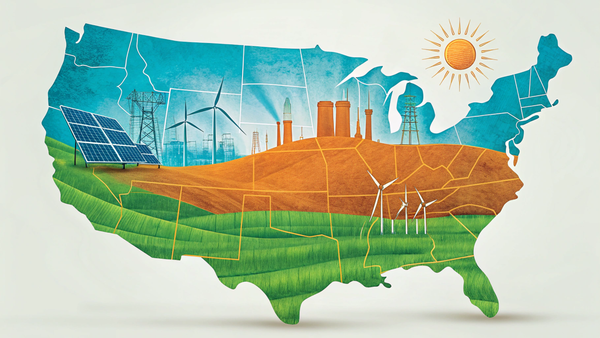Climate Progress 2024: The REPEAT Project’s Annual Emissions Update
Examining U.S. Greenhouse Gas Emissions Trends and Opportunities for a Net-Zero Future
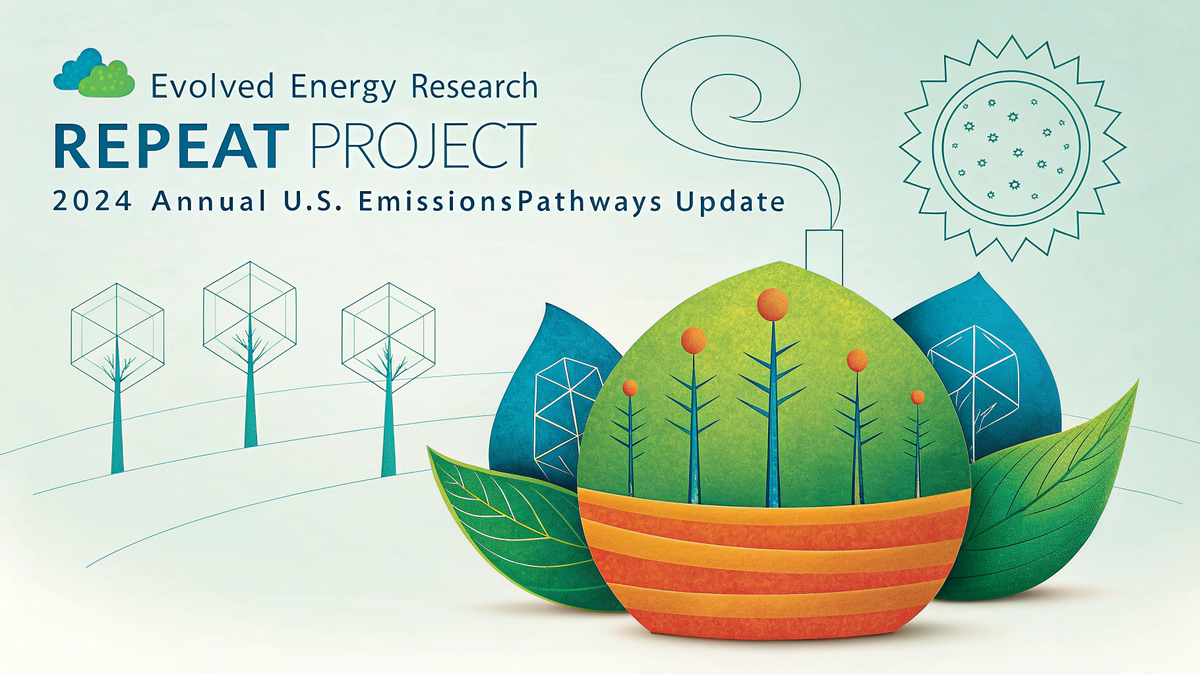
Introduction
In the face of accelerating climate challenges, understanding the progress toward reducing greenhouse gas emissions is critical. The REPEAT (Rapid Energy Policy Evaluation & Analysis Toolkit) Project’s 2024 Annual U.S. Emissions Pathways Update offers an in-depth analysis of current trends and policies, highlighting pathways to achieve net-zero emissions by 2050. This year’s update incorporates recent economic shifts, updated regulatory frameworks, and technological advancements.
Methodology
The REPEAT Project serves to deliver regular, timely, and independent environmental and economic evaluations of proposed and enacted federal energy and climate policies. The project combines geospatial planning tools with macro-energy system optimization models. This approach evaluates U.S. federal energy and climate policies at politically relevant spatial resolutions (state, county, or finer). The analysis integrates updated macroeconomic assumptions, technology costs, and regulatory impacts, benchmarking results against historical data and industry outlooks. Scenarios reflect variations in policy effectiveness, supply chain constraints, and economic conditions. This comprehensive process provides timely, independent insights into emissions pathways, clean energy adoption, and the impacts of policy changes, enabling stakeholders to assess progress toward net-zero emissions by 2050 with credible and detailed projections.
Key Insights from the Update
- Emissions Trends and Policy Scenarios
- Current Policies: The report analyzes three scenarios (“Conservative,” “Mid-range,” and “Optimistic”), reflecting uncertainties in policy effectiveness and supply chain constraints. Under these scenarios, U.S. emissions in 2030 are projected to be 32-34% below 2005 levels—falling short of the national target of at least 50% reductions.
- Net-Zero Pathway: A straight-line pathway for achieving net-zero emissions by 2050. While this scenario also does not achieve the 2030 national target, when contrasted with the current policy scenarios, it illustrates where additional effort is needed to be on track for mid-century goals.
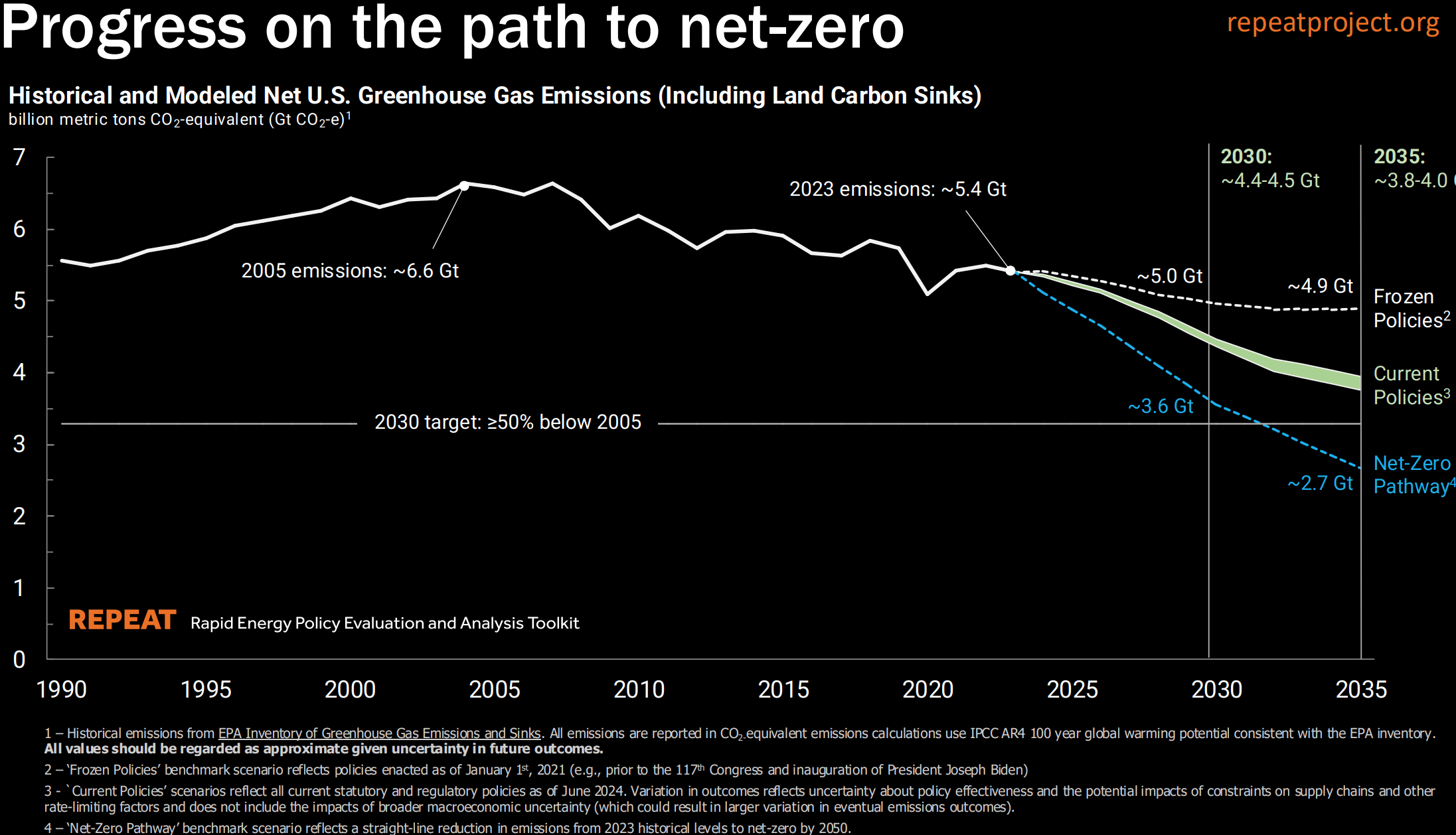
- Sectoral Analysis
- Electricity: Emissions reductions in the power sector remain a cornerstone of least-cost decarbonization. Renewable energy sources like solar and wind are projected to grow significantly by 2035 in the current policy scenarios (solar +225-245%, wind +259-384%).
- Transportation: Electrification of vehicles is accelerating, but the share of battery electric vehicles (BEVs) must increase to meet long-term goals. BEVs are projected to rapidly increase as a share of of light vehicle sales by 2035, making up 47-85% depending on the current policy scenario.
- Industry and Buildings: Significant gaps remain in decarbonizing these sectors, emphasizing the need for enhanced efficiency and electrification efforts.
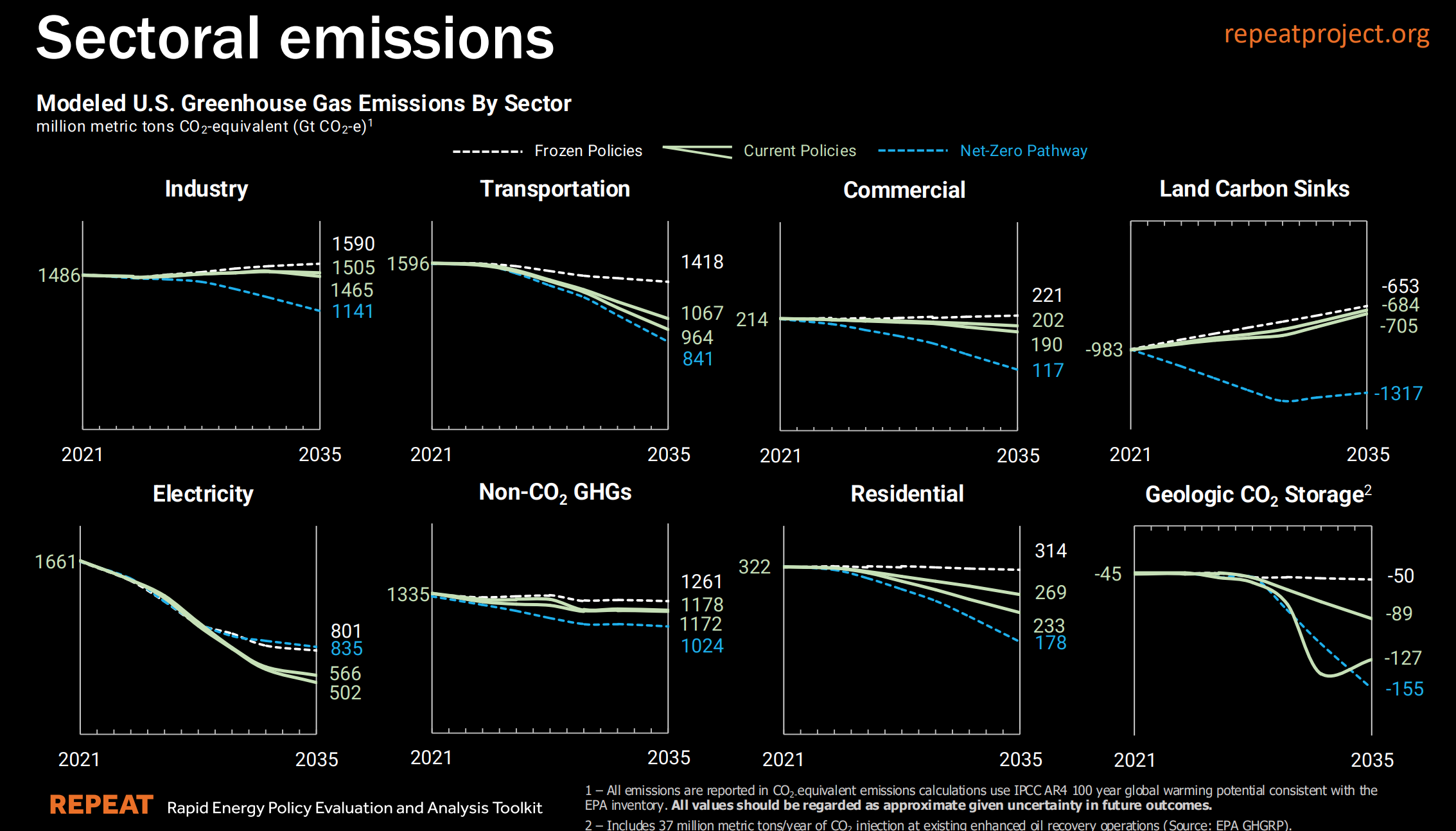
- Electricity Demand and Supply
- Total electricity consumption is expected to rise by 35-55% by 2035 in the current policy scenarios, driven by electrification of vehicles and hydrogen production.
- The energy mix is evolving rapidly, with renewables poised to dominate electricity generation. By 2035, carbon-free sources supply 77-78% of US electricity needs in the current policy scenarios.
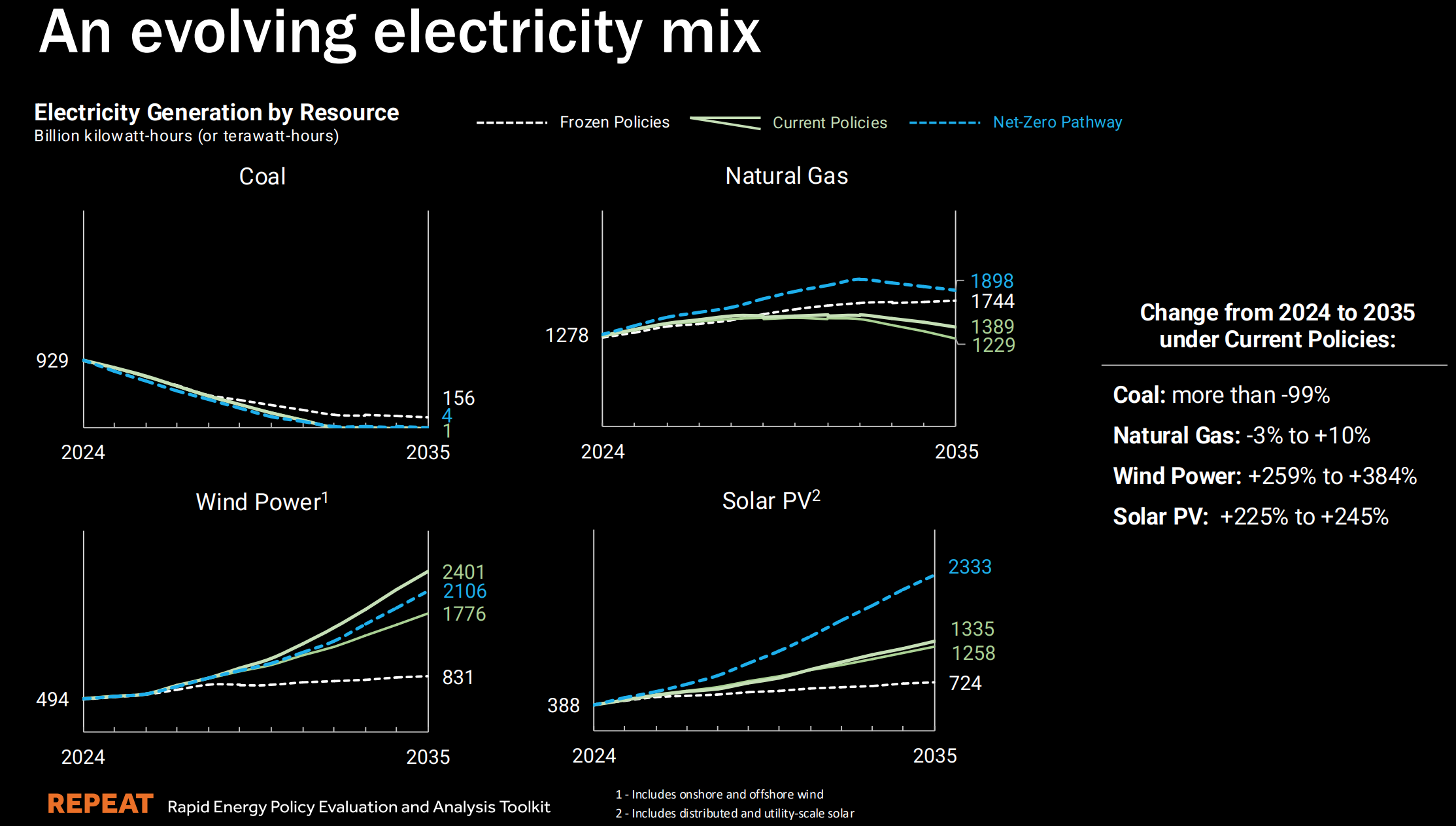
- Challenges and Opportunities
- Achieving deeper emissions reductions to follow the Net-Zero Pathway requires policy support for methane abatement in agriculture, industrial decarbonization, and robust investments in clean energy infrastructure.
- Inflation and rising project finance costs present headwinds for renewable energy deployment, emphasizing the need for targeted incentives to stay on track with the Net-Zero Pathway.
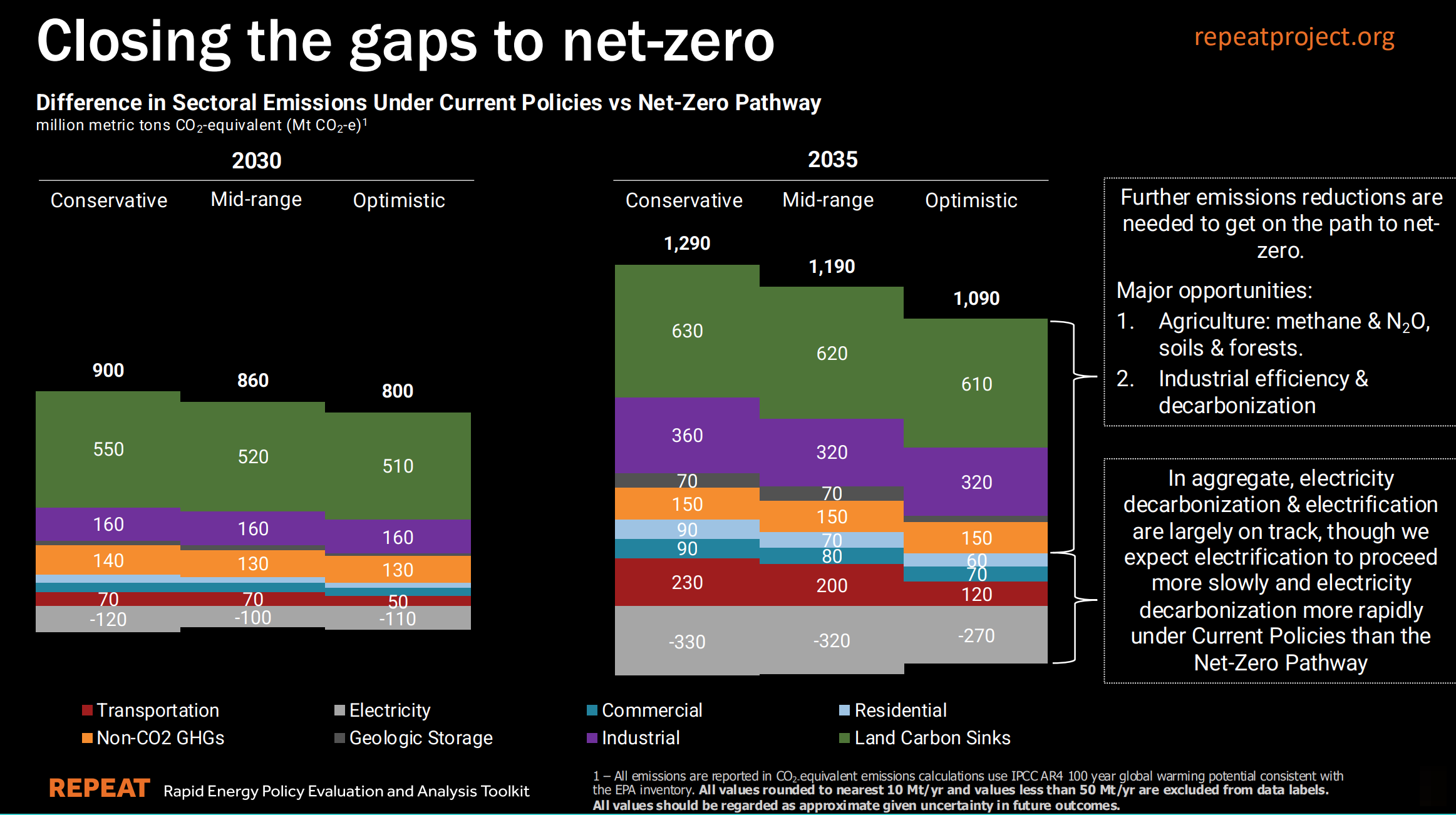
Conclusion
The REPEAT Project’s 2024 update underscores the progress and challenges on the U.S. path to net-zero emissions. While projected policy impacts on clean energy and transportation suggest progress on emission reductions, sustained investments and additional policy will be crucial to bridge the gap to climate goals. Continued progress will require alignment amongst stakeholders, policymakers, and the public.
Visit REPEAT Project to explore detailed findings, access data, and learn how federal policy and proposals are shaping US pathways to decarbonization.
Access the full update here.
Image Credits: All images and data visualizations sourced from the REPEAT Project’s 2024 Annual Report under CC BY license.



